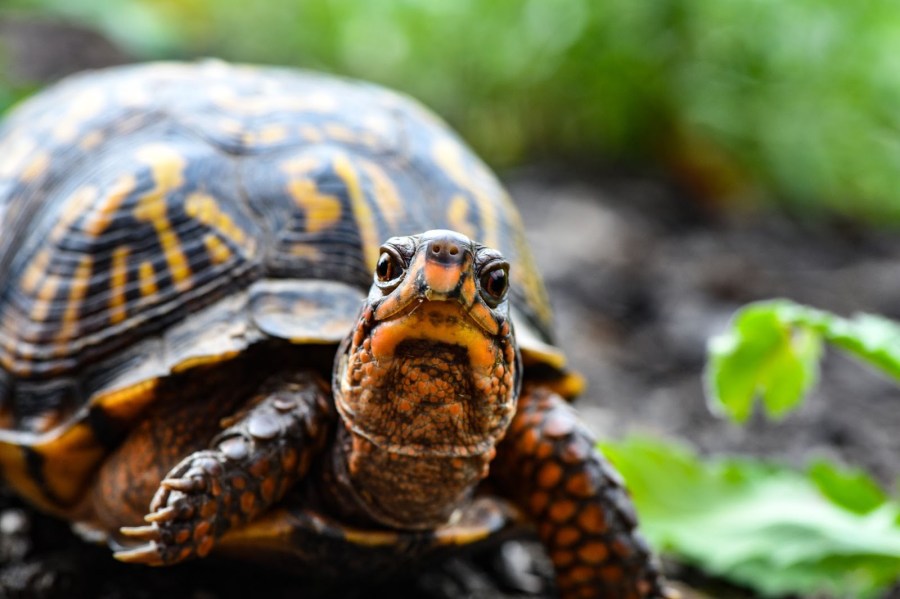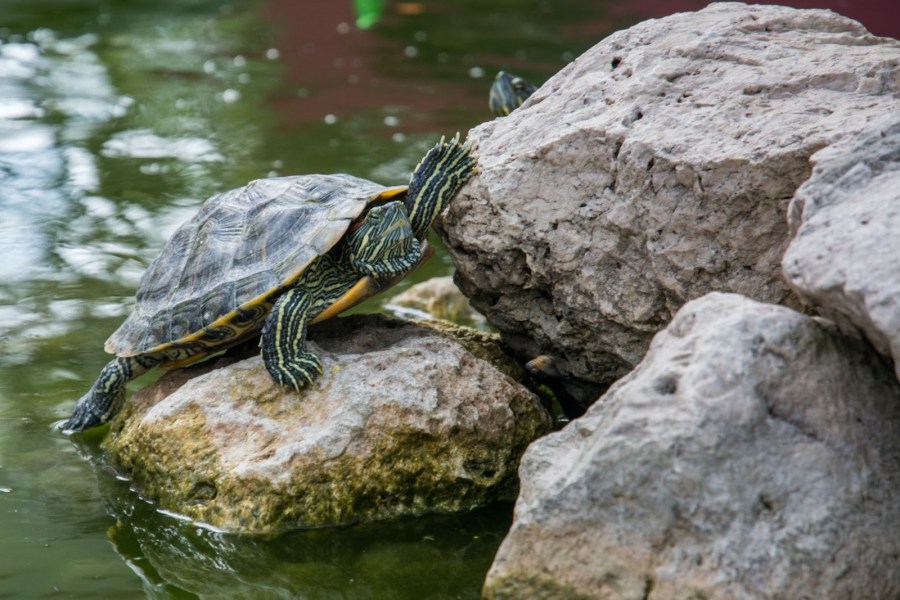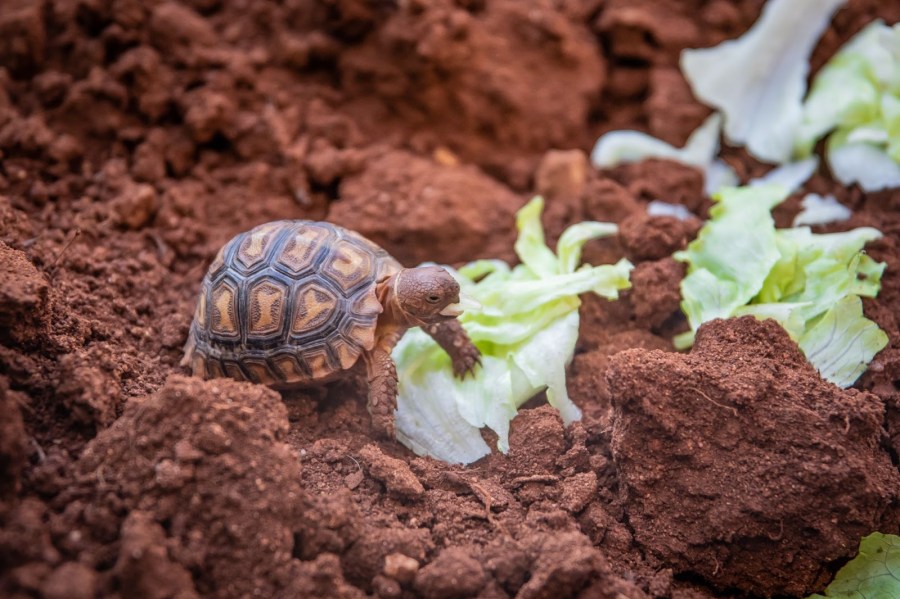How to Build Quick Easy Vertical Planter Boxes
While turtles can certainly make wonderful, rewarding pets, it's essential that you do your research before you decide to add one to your family. Turtles–and specifically box turtles–require a significant investment of time, energy, and resources.
One of the most important things you can do for your pet is to cultivate an environment where they feel comfortable and thrive. If you equip your box turtle with the tools it needs to succeed, you can expect to spend up to 50 years with your reptile friend.
Today, we're going to discuss how you can make your box turtle the ideal habitat. First, we'll run through some background on the species, talk about who they're a good pet for, and finally, how to effectively take care of your box turtle.
What Exactly Are Box Turtles?

Image Attribution: Pixabay
There are several types of turtles that make popular pets. The box turtle is undoubtedly one of them. It's important to note that there are actually several different types of box turtles, and you should pay attention to the details when you're devising a plan on how to care for your turtle. For example, a North American box turtle will have slightly different requirements than an Asian box turtle.
The different species of box turtles are largely similar but vary in regards to their housing and dietary requirements. You'll find that some box turtles need a more humid enclosure or higher temperatures. Some enjoy basking; others don't spend as much time doing it. Finally, some varieties prefer water that's slightly salty instead of fresh. If you have questions about your specific type of box turtle, you should investigate their specific requirements before bringing them home. By doing this, you're prepared to give them the life they deserve.
The box turtle is native to North America, so there's a chance you'll find one out in the wild. If you do, please leave it alone. Never take a wild turtle from its environment and introduce it to your home. There are a few reasons why. For one, turtles are extremely susceptible to stress. It's unfair to remove a wild turtle from their natural environment. Secondly, these turtles can carry Salmonella–even the domesticated ones. That's why you should make a habit of washing your hands with soap and water after you handle your turtle or anything in their habitat.
Instead, opt to acquire your box turtle from a trusted, ethical pet seller. You will find that your new reptile friend has a high-domed upper shell. It is usually brown and has a yellow or orange pattern. Box turtles usually have a smallish head and a hooked upper jaw. Generally speaking, you can expect a box turtle to have a distinct, unique personality.

Image Attribution: Pixabay
Box turtles absolutely can–and do–make wonderful pets. That being said, they certainly aren't the right pet for everyone. This is largely because their habitat can be difficult to perfect and because their care requirements are complex.
If you're a first-time pet owner or you have young children, a box turtle won't be the right fit for your home. But don't worry! There are other turtles that could potentially fit into your lifestyle better.
Another thing you should keep in mind when you're deciding if the box turtle is the right pet for you is if you'll be able to provide your turtle with resources for an extended period of time. These turtles generally live several decades (up to 50 years), so you should be forewarned of the time, money, and effort you're going to spend on them. We think it's worth it.
In addition to this, if you're looking for a pet that you can handle frequently, you might want to consider a different animal. Box turtles don't enjoy being handled frequently. They don't usually bite, but if you get your turtle stressed out, they might snap due to anxiety. Still, your turtle will certainly get acclimated to you. Box turtles begin to recognize their owners and sometimes will even follow your movements from inside their enclosure.
All About an Ideal Box Turtle Habitat

Image Attribution: Skitterphoto
It's important to note that your box turtle's habitat should mimic the one that they would have out in nature. This can be difficult to cultivate, but your turtle will definitely be grateful for the effort you invest in making their environment a welcoming one.
Outdoors
Box turtles usually thrive in an outdoor turtle-safe pen–as long as the temperature is higher than 50 degrees Fahrenheit, that is. The pen you get for your turtle should have walls that are at least 18 inches tall. In addition, they should have an overhang. This will prevent your turtle from making a getaway and climbing out of their pen.
There should be both sunny and shady areas in your turtle's environment, as well as places for them to hide. Finally, there should be access to a shallow water dish. It's essential that your turtle doesn't feel threatened by predators in this environment, so be mindful about where you're putting it.
If you're housing your box turtle outdoors, your pet might hibernate. Before you allow them to do so, you should ensure that they're healthy. Because bodily functions slow during hibernation periods, if your box turtle is unwell when they go into hibernation, they might never wake up.
Indoors
If you live in a colder climate, you won't be able to keep your turtle outdoors the entire year. Still, you should certainly aim to do so for at least a portion of the year. Indoor box turtles don't experience the same quality of life as those who spend time outdoors. We also want to note that you need to use a terrarium that is 40 or more gallons if you are creating an indoor environment.
Some owners get creative for indoor turtle housing. This can include plastic children's pools, large tubs, and even sandboxes. You should also plan to provide your turtle with a UV light, a heat source, a shallow dish for water, and places to hide.
What Will My Box Turtle Need?

Image Attribution: Pixabay
There are several things that you should prepare to provide your box turtle. Doing so can help support their survival and success. These include heat, humidity, lighting, substrate, and food/water, of course.
Heat
The ideal temperature for your box turtle depends on their specific species, so do your research. Still, you can expect most box turtles to need a daytime temperature of somewhere between 70 and 80 degrees Fahrenheit. At night, this temperature will dip very slightly. In addition to this, they'll need a basking spot in the 85 to 90 degrees Fahrenheit range. You should accessorize their home with a basking lamp as well as ceramic heat emitters or other sources of heat. Box turtles need their environment's temperature to be regulated, but it's worth it.
Humidity
Your box turtle will enjoy about 60% humidity. There are a few ways that you can tackle maintaining this level. You can do daily misting or use a substrate that will retain some moisture. In some cases, you will do both.
Lighting
It's essential that you equip your box turtle's habitat with the correct light. UVB lighting is required for box turtles to metabolize the calcium that's present in their diets. Without this, they can develop several ailments. Your turtle will need approximately 12 hours of UVB lighting daily. This can be acquired via natural sunlight or a lamp. When they're indoors, you should turn off the light at night. This will mimic a natural day-night cycle and help facilitate a routine for your turtle.
Substrate
You might be wondering what substrate is. Substrate refers to the material that you'll use to line the bottom of your turtle's enclosure. This can help maintain the humidity and also allow your turtle to burrow. It will also help their habitat feel more natural. You should use a substrate that is similar to the turtle's natural environment. You can use leaves, top-soil (make sure it's chemical-free), or even moss. Layer it four or more inches deep.
Food and Water
Last but not least, you should provide your turtle with food and water in their environment. Your box turtle is an omnivore, which means they'll eat both plants and animal tissue. Some ideas for foods that you can provide your turtle with include vegetables, fruits, low-fat meat, insects, and pinky mice. You can also consider putting your turtle on a commercial diet but definitely supplement such with fresh foods. Clean water should be available at all times.
Final Thoughts
Cultivating the correct environment for a box turtle is necessary. While it does require time, resources, and money, you'll find that your box turtle will be extremely grateful for what you provide them.
SOURCES:
A Guide to Caring for Common Box Turtles as Pets | Spruce Pets
Owning Box Turtles | VCA Animal Hospital
Building Outdoor Housing for Box Turtles | Spruce Pets
Source: https://www.reference.com/pets-animals/box-turtle-habitat?utm_content=params%3Ao%3D740005%26ad%3DdirN%26qo%3DserpIndex&ueid=3d2ec192-130e-4981-b763-4fcf0f3d0269
0 Response to "How to Build Quick Easy Vertical Planter Boxes"
Post a Comment